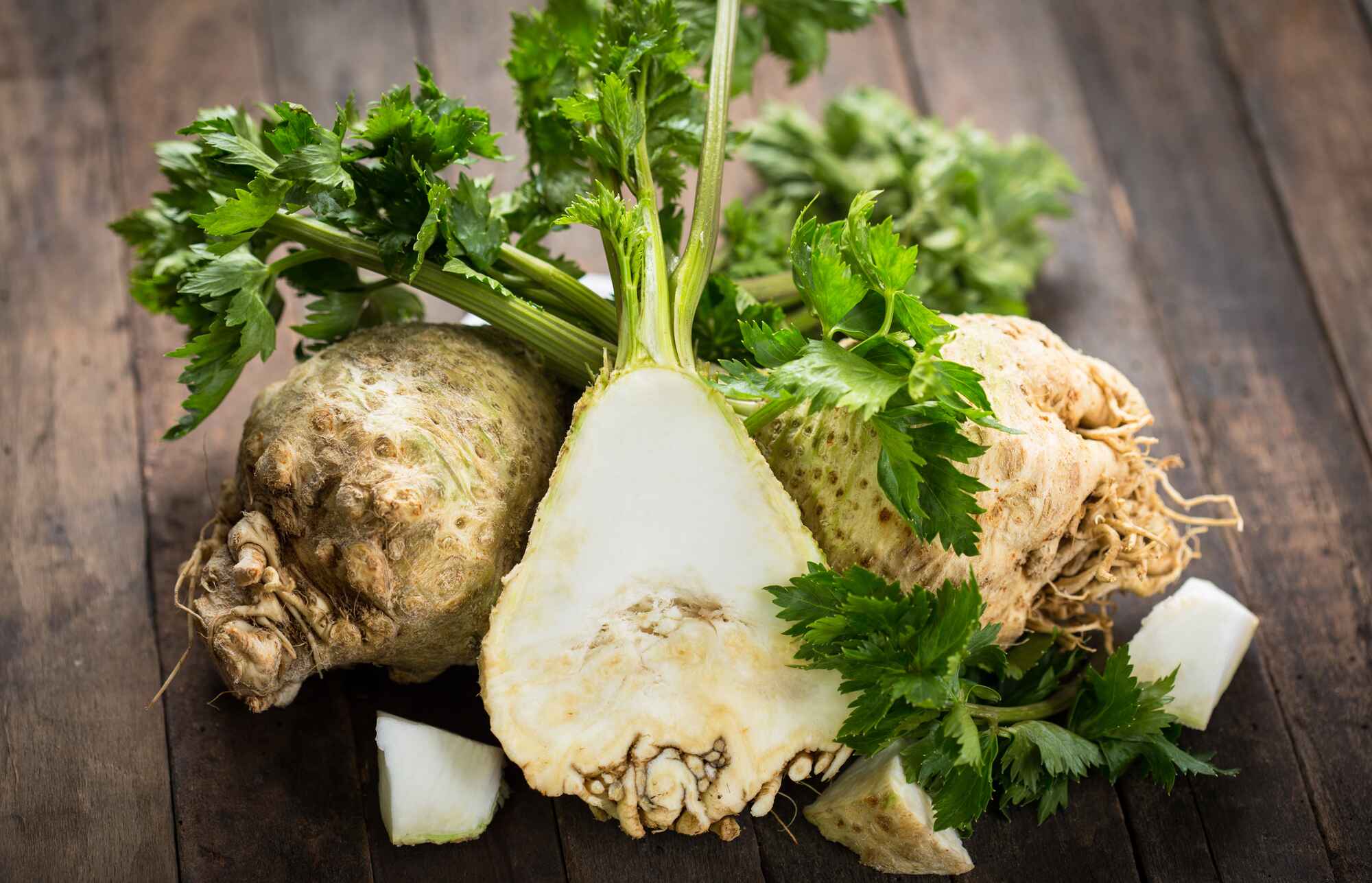
Key Takeaways:
- Celeriac, also known as celery root, is a versatile and nutritious vegetable with a distinct celery-like taste, perfect for adding a unique twist to your culinary creations.
- With its low calorie count, rich nutrients, and ability to elevate flavors, celeriac is a great choice for both health-conscious individuals and creative chefs looking to experiment in the kitchen.
The Origins of Celeriac
Celeriac, also known as celery root, is a vegetable that belongs to the Apiaceae family. It is believed to have originated in the Mediterranean region and has been cultivated for centuries.
The Appearance of Celeriac
Celeriac has a knobby and rough exterior, resembling a large turnip. Its flesh is creamy white and has a distinct celery-like taste, making it a unique addition to culinary dishes.
Common Uses of Celeriac
Celeriac is often used in soups, stews, and purees to add a subtle earthy flavor. It can also be eaten raw in salads or roasted for a crispy and flavorful side dish.
Health Benefits of Celeriac
Celeriac is a nutrient-dense vegetable, rich in vitamins C and K, as well as dietary fiber. It has been associated with various health benefits, including improved digestion and reduced inflammation.
Celeriac as a Low-Calorie Option
If you’re watching your calorie intake, celeriac is a great choice. With only around 60 calories per cup, it’s a filling and nutritious option for weight management.
Growing Celeriac
Celeriac thrives in cool climates and prefers well-drained soil. It is typically grown from seeds and requires a longer growing season compared to other vegetables.
Celeriac Storage Tips
To extend the shelf life of celeriac, store it in a cool and dark place, such as a refrigerator. It can stay fresh for several weeks when properly stored.
Popular Cuisines That Feature Celeriac
Celeriac is a staple in many European cuisines, particularly in French and German dishes. It adds depth and flavor to traditional recipes like céleri rémoulade and German potato salad.
Celeriac in Gourmet Cooking
In the world of gourmet cooking, celeriac is often used to create exquisite purees and velvety smooth sauces. Its delicate taste adds a touch of elegance to high-end culinary creations.
Alternative Names for Celeriac
Aside from celeriac and celery root, this versatile vegetable is also known as knob celery, turnip-rooted celery, and knob-rooted celery.
Celeriac and Culinary Creativity
Celeriac’s unique flavor and texture make it a favorite among creative chefs. Its versatility allows for endless culinary experiments and innovative recipes.
Elevating Dishes with Celeriac
Whether it’s a simple soup or a complex gourmet dish, celeriac has the power to elevate the flavors and bring a unique twist to any recipe.
Conclusion
In conclusion, celeriac is a highly nutritious and versatile vegetable that offers numerous health benefits. From its high fiber content to its rich source of vitamins and minerals, celeriac is a great addition to any diet. Whether you’re looking to boost your immune system, improve digestion, or add a unique flavor to your dishes, celeriac is definitely worth trying. Its distinct taste and texture make it a wonderful ingredient in salads, soups, stews, and even as a healthier alternative to mashed potatoes. So, next time you come across this root vegetable in your grocery store, don’t hesitate to bring it home and explore its culinary possibilities.
FAQs
1. What is celeriac?
Celeriac, also known as celery root, is a root vegetable that belongs to the same family as celery. It has a knobby appearance with a rough exterior and a creamy white flesh.
2. How does celeriac taste?
Celeriac has a unique flavor that is often described as a mix of celery and parsley, with a subtle hint of nuttiness.
3. How do I prepare celeriac?
To prepare celeriac, start by peeling off the rough outer layer. Then, you can either dice it, slice it, or grate it, depending on your recipe.
4. How can I incorporate celeriac into my diet?
Celeriac can be enjoyed in various ways, such as roasted, mashed, steamed, or added to soups and stews. It can also be used as a healthy substitute for potatoes in dishes like gratins and fries.
5. Is celeriac good for my health?
Absolutely! Celeriac is packed with nutrients, including vitamins C and K, potassium, and fiber. It also has antioxidant properties and may help support digestion and immune function.
6. Can I eat celeriac raw?
Yes, celeriac can be eaten raw. It has a crisp texture and adds a refreshing taste to salads and slaws.
7. Where can I buy celeriac?
Celeriac is typically available in most grocery stores, especially during the fall and winter months. Look for firm, unblemished roots when selecting celeriac.
8. How should I store celeriac?
Celeriac should be stored in a cool, dark place, such as the refrigerator. It can last for several weeks when stored properly.
9. Are there any alternative names for celeriac?
Yes, celeriac is commonly known as celery root, turnip-rooted celery, or knob celery.
10. Can I freeze celeriac?
While it’s possible to freeze celeriac, its texture may change upon thawing. It is best to use fresh celeriac for optimal taste and quality.
Was this page helpful?
Our commitment to delivering trustworthy and engaging content is at the heart of what we do. Each fact on our site is contributed by real users like you, bringing a wealth of diverse insights and information. To ensure the highest standards of accuracy and reliability, our dedicated editors meticulously review each submission. This process guarantees that the facts we share are not only fascinating but also credible. Trust in our commitment to quality and authenticity as you explore and learn with us.
